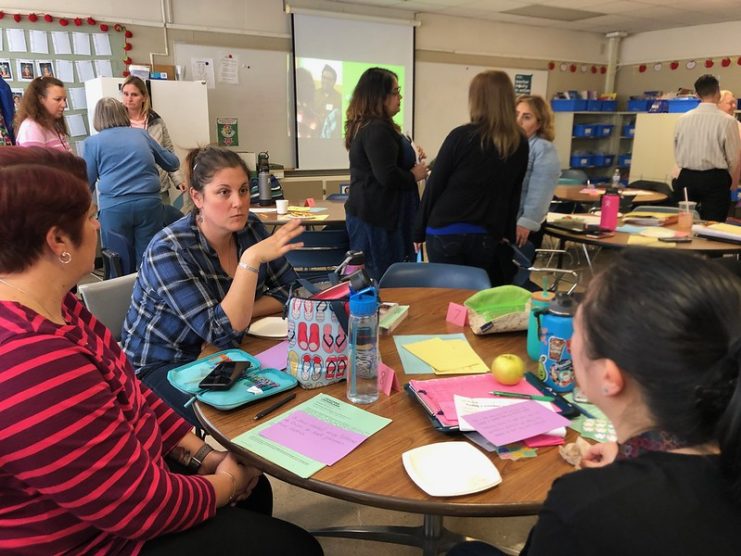
Harnessing the Power of Instructional Leadership Teams
Instructional leadership team members at one of our partner sites log into Zoom each month ready to dive into teacher learning data to understand more about their adult learners. These teacher leaders each bring a unique viewpoint, from their different departments, to support their school’s instructional goals.
First alone, and then together, they dig into their data by asking themselves:
- What are my colleagues doing, saying, and feeling that indicates success?
- When I look at the data, what am I not yet seeing? What do I want colleagues to be doing, saying, thinking?
- What is puzzling me about the teacher learning data I brought today?
These instructional leadership team members are using inquiry and the practice of Public Learning to develop their leadership capacity to support their teachers to ultimately support their students.
Instructional Leadership Teams (ILTs) are powerful drivers of change in schools when they are leveraged for learning and leading. In far too many systems, the ILT functions as a cog in the top-down message delivery system. It goes something like this: district leadership shares a message with the principal, who shares it with their ILT, who shares the same message with their teachers about what to do, to implement, to focus on, etc. And then we scratch our heads, wondering why there is so much direct, top-down, delivery-style instruction in the classroom!
This top down delivery model is not learning (we’ve established this over and over for students) and does not create the transformational change required for equity. Educator adaptability and creativity cannot happen in this model because actions are happening “to” not “with” those within the system. When our leaders experience the type of transformational learning that leads to adaptability and creativity, they will begin to create those experiences for their teachers who will ultimately create them for their students.
This year, we are working closely with Instructional Leadership Teams in order to build the capacity of all their leaders to support learning at all levels of the system. Here is a window into that work:
Rick (pseudonym) is an instructional leader who we are partnering with this year. Rick has been on his school’s ILT for three years and his department has a strong community who enjoys their meetings. However, as a leader, he has wanted more. He has goals for his colleagues to align their teaching both horizontally and vertically at his comprehensive high school. He has tried common assessments and rubrics in the past, but for various reasons his goals have fallen short and they have struggled to get on the same page about student learning goals.
When Lead by Learning first began working with his school’s ILT, Rick’s department had a routine of sharing a successful activity. A teacher would share what they had done, others would ask questions, and the materials would be disseminated for use. However, according to Rick, this type of sharing was not moving teacher practice. While it supported building community, it wasn’t moving teacher practice because only the best student data was being shared. In many ways it was “the greatest hits” a colleague was willing to share with their department. The diverse student experience wasn’t present in the department’s learning efforts. His department shared a culture of “nice;” not necessarily a culture of learning.
Through bringing data to the ILT sessions that Lead by Learning is supporting, Rick was asked to focus on the learning experience of the colleagues he leads in his department. He started to listen to the types of questions that teachers ask each other and their ability to be vulnerable with their colleagues about their uncertainties. Rick with support of ILT colleagues during Public Learning began to get more clear on what skills he wanted to develop in his adult learners:
He wanted his team to:
- use student data to evaluate their own effectiveness and adapt instruction.
- support a teacher’s thinking through asking supportive challenging questions.
- zoom into their instruction to create more equitable outcomes for students.
- share dilemmas not just best practices.
As he became clearer, the adult learning data he began to collect in his department meetings became clearer too. What began as a goal for colleagues to share practice has transitioned into a goal for colleagues to share authentic dilemmas. What began as a space for teachers to share “what they know” is transitioning to be a safe space to share “what they do not know” to move forward together.
Now, as a member of his instructional leadership team Rick is empowered to be a leader of learning.
